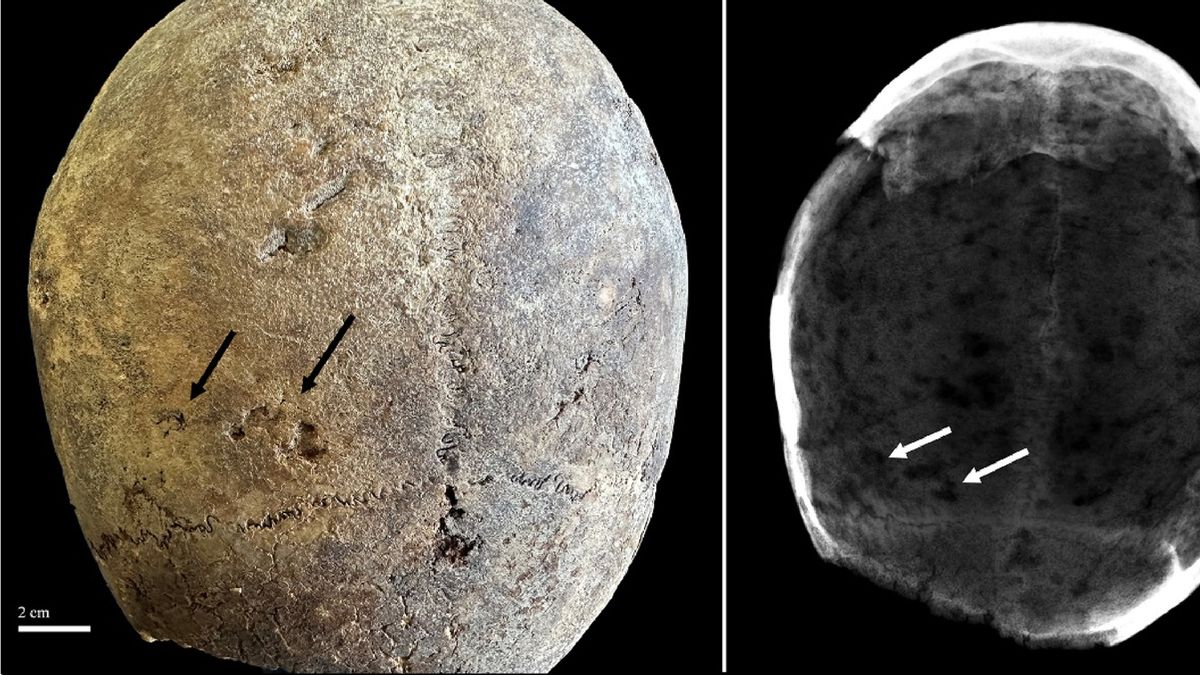Traces of cocaine discovered in mummified brain tissue reveal that Europeans were chewing coca leaves — possibly for medical or recreational purposes — in the 17th century, two centuries before the earliest known documented use of the New World plant in the Old World, a new study finds.
Researchers discovered the remnants of cocaine in two individuals buried in a crypt that served as a burial ground at Ospedale Maggiore, a “pioneering hospital” in Milan that catered to the destitute, according to the study, which was published in the October issue of the Journal of Archaeological Science.
Of the roughly 10,000 individuals buried in the crypt, researchers examined the brain tissue of nine people who had died at the hospital in the 1600s and were naturally mummified. They performed a toxicological analysis of the tissue with a mass spectrometer, which identifies the chemical composition of a sample by measuring the mass of its individual molecules. The analysis revealed three key molecules — cocaine, hygrine and benzoylecgonine — in the brain tissue of two individuals. The presence of hygrine indicates that the cocaine in their tissues came from consuming coca leaves. Consuming cocaine salt, a method that is typically used in modern times, doesn’t produce hygrine.
Related: Nazca child ingested psychoactive cactus just before ceremonial death in ancient Peru
Cocaine is extracted from the leaves of coca plant (Erythroxylum coca), a bush native to South America. When Italian explorer Amerigo Vespucci arrived in what is now Venezuela in 1499, he noticed that the Indigenous people chewed coca leaves with lime and roasted shells, according to the study. Later, invading Spaniards noticed that the Inca Empire controlled coca plant crops and used them for religious, recreational and medical purposes.
“Indeed, the Inca population considered it a miraculous and magical plant that had the power to take away hunger and thirst, produced exhilarating effects, could be used as medicine (as antiseptic and analgesic, to help in digestion, to cure asthma, stomach ache, chest pain and sores, reduce nose bleeding and vomit), and induced a sense of well-being,” the researchers wrote in the study.
Although the Spanish conquistadors learned about the medicinal and recreational attributes of coca leaves, they initially kept it a secret while they focused on exporting other resources, such as gold, silver, sugar and tobacco. But chewing coca leaves enabled the Spaniards to toil relentlessly in gold and silver mines, as well as on the plantations. The few conquistadors who tried sending coca leaves to Europe saw their contraband degrade during the transatlantic voyage, preventing the plant’s introduction to Europe until the 1800s.
But now, it appears the plant reached Europe earlier than that. Radiocarbon dating of the bone of one of the individuals buried with those who tested positive for cocaine showed that they lived about 350 years ago.
“These laboratory analyses not only backdate the arrival of the Erythroxylum spp. by almost two centuries in Europe, but also demonstrate that some Milanese citizens came into contact with this New World plant and chewed or brewed its leaves as tea,” study lead author Gaia Giordano, a doctoral student in archaeotoxicology at the University of Milan, told Live Science in an email.
Hospital records at Ospedale Maggiore don’t mention cocaine as a treatment until the 19th century, so it’s likely that these two individuals had sourced coca leaves by themselves, the researchers said. The presence of cocaine in the brain tissue hints that the cocaine intake happened when the users were close to death. Interestingly, one of the coca users also lived with tertiary syphilis and was identified as an opium user in a 2023 study published in the journal Scientific Reports.
Giordano thinks that these two individuals used coca leaves either for recreation or self-medication. “It may have been administered as part of a medical remedy by healers not practicing in the hospital,” she said.
As the Duchy of Milan was under Spanish rule in the 17th century and was one of the destinations of sea trade from the Americas, it’s possible that some coca plants reached Milan unbeknown to the authorities. In the centuries since, cocaine has spread across the world, becoming “a widespread substance of abuse for its psychoactive properties, as well as the cause of 1/5 of overdose deaths across the world in the 20th century,” the authors wrote in the study.

